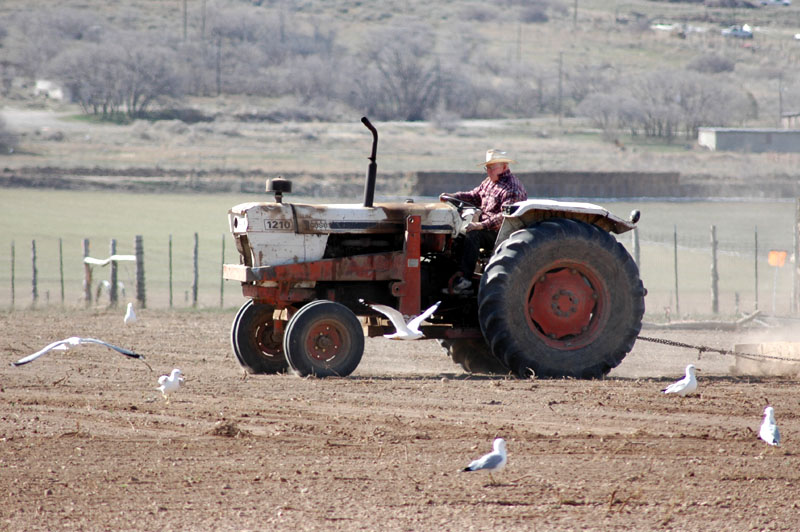
Our friend's name is Jack B. Clark, and he has spent his whole life farming. On March 14th Jack started leveling the field. A lot of seagulls arrived to eat the earthworms that were exposed by this.

Jack's tractor is quite old but a new one is out of my price range, so I just hired Jack.

Our land goes to the end of the fence on the left of this photo, which is partly obscured by all of the dust. Now we have to figure out how to water it all!
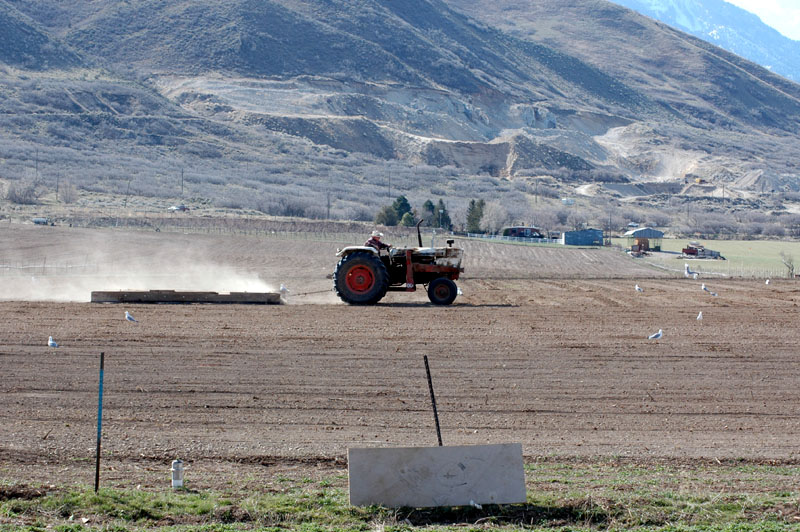
This is what a bale of hay looks like close up from one of Jack's previous year's crops.

In the middle of all this came St. Patrick's Day, March 17th, and on this day Rachel got her learner's permit for driving, and Andrew got his Driver's License finally. So here they are going for Andrew's first drive alone. They went to McDonalds and got Big Macs. It is fun to see them doing things together.
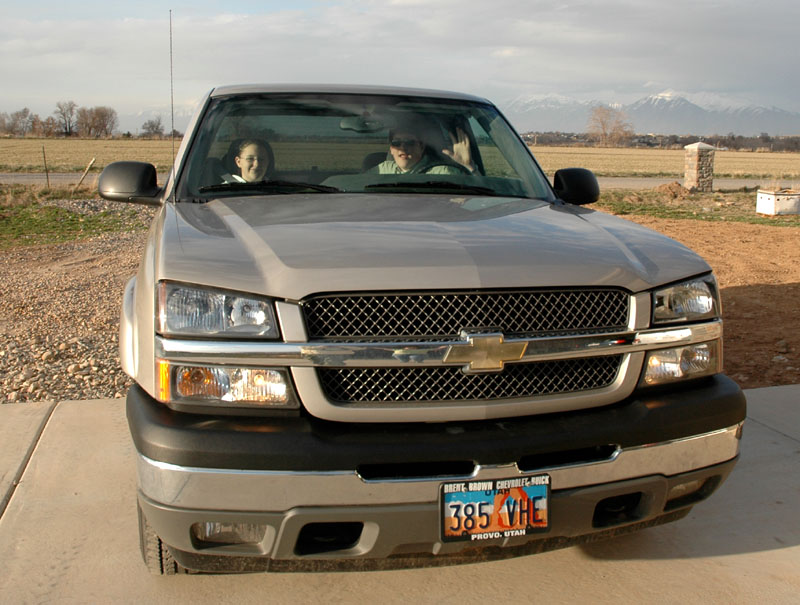
Meanwhile on the north side of the house we have recently had a new mailbox constructed by Josh Buck. It has a concrete base and then Josh, who came highly recommended by my cousin Bob Allen, used his mortar skills as well as our leftover rock from the house to make this nice solid mailbox. Our "David Allen Memorial Mailbox" has been retired.
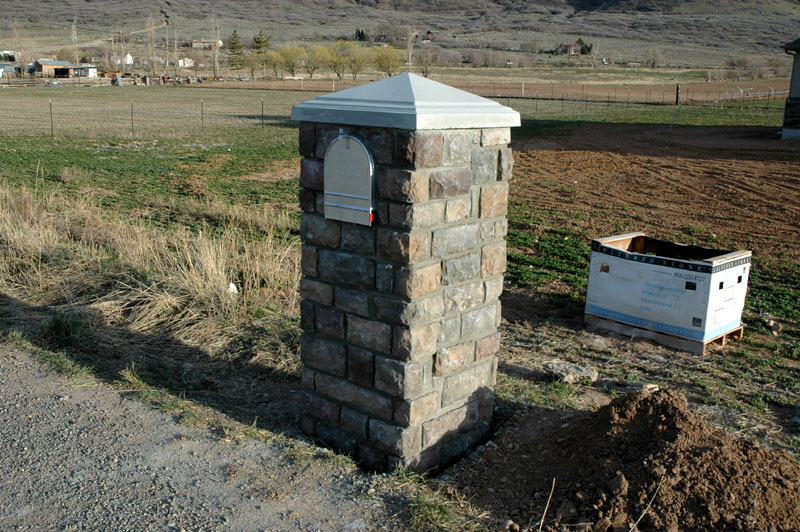
On St. Patrick's Day our farmer friend began planting our field. He is going to plant two things together: oats and alfalfa. The oats seen here did not make it into the ground. Oats Avena sativa originally came from Iraq and Turkey.
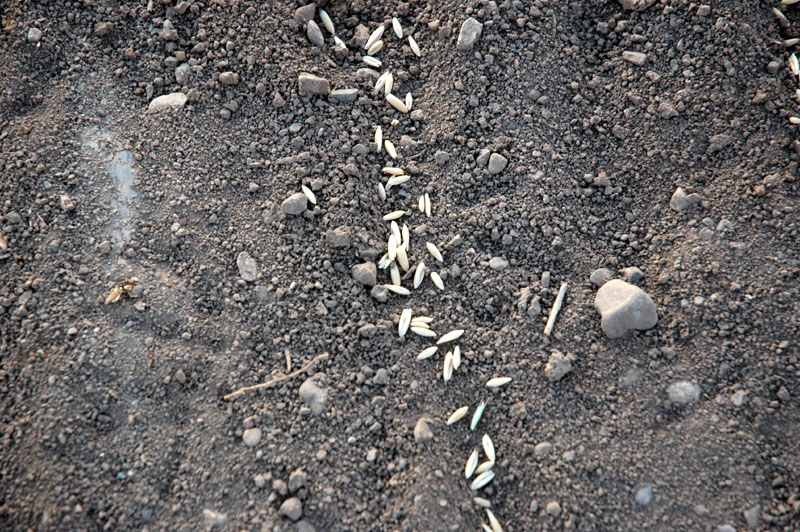
Here is Jack planting our ground. The spreader wheels actually bury most of the seed. These oats are supposed to grow several feet tall by the end of the summer.
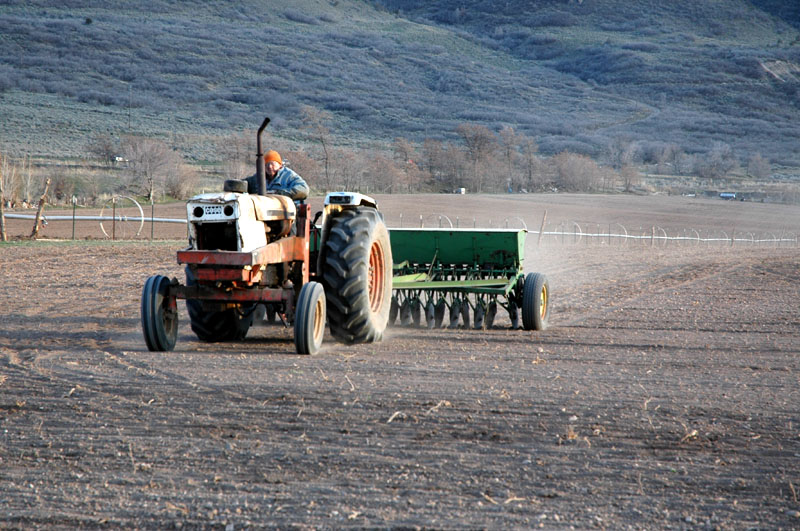
Jack will come again soon to plant alfalfa which for this first year will not grow more than about half a foot. Alfalfa (Medicago sativa) is grown in almost every state in the US. It can survive temperature extremes of -13°F to over 122°F. It does go dormant under severe drought and usually will resume growth when conditions improve. This is what happened here, as our land was originally planted in 1997 with alfalfa, and it has not been watered in a few years and yet this spring it is coming up all around our house! Alfalfa most likely originated in the middle east, probably in Iran. Alfalfa has the highest feeding value of all common hay crops. Its primary use is for production of hay. It is also a high-quality forage for all types of livestock, including horses, cattle, dairy cattle, and sheep. Planting Alfalfa with another grass minimizes bloat problems, while maximizing gain. It is also the largest crop acreage used for honeybees. Alfalfa is a good soil fixer, supplying nitrogen back into the soil by combining with the bacteria Rhizobium meliloti.

Created: 18 Mar 2005 Modified: 18 Mar 2005